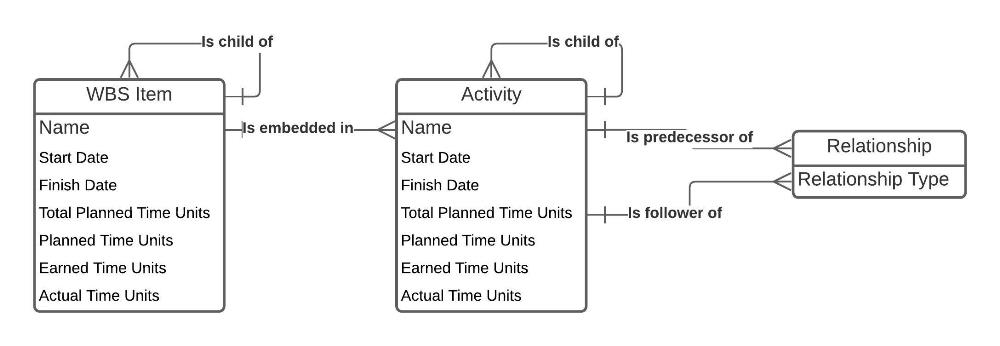Developing a Standards Based Project Management Information System
SERIES ARTICLE
By Jeremy C. Bellah, PhD
Director, Center of MIS Studies
University of Oklahoma
Norman, Oklahoma, USA
Introduction
This is one of a series of articles that describes the development of a project management information system (PMIS). Using the design science research methodology, I created an artifact, and that artifact is the research contribution. In the first article, I described the overall development process. In subsequent articles, I describe in depth specific functions in the system. In the following pages, I describe the design of the project schedule functions in the PMIS. I conclude with future direction and pending questions. My hope is to spark interest and engage project management practitioners in the project.
To develop the PMIS, I used a low-code development tool called Mendix. This allowed me to develop the functionality much more quickly than I would have been able to otherwise. Additionally, it allows me to show program logic visually in these articles. Key portions of program logic will be displayed where appropriate.
Processes and Data
The PMIS is designed to mirror the standards in “A Guide to the Project Management Body of Knowledge,” more commonly known as the PMBOK® Guide (Project Management Institute, 2017); therefore, the functionality is described according to the content in that standard. The first article in my series explains the overall design of the system (Bellah, 2021). In that article, I explained how some of the documents (usually inputs and outputs of project management processes) are integrated into the system using database tables and custom interfaces. The following documents used in processes in the Project Schedule Management knowledge area are integrated in the PMIS:
- Activity list
- Activity attributes
- Milestone list
- Network diagrams
- Duration estimates
- Basis of estimates
- Project schedule
- Schedule baseline
- Work performance information
A database supports all of the integrated documents in the PMIS. Figure 1 shows an Entity Relationship Diagram (ERD) of the tables required to implement the functionality for the documents listed above. To save space, most attributes are not included in the ERD.

Figure 1: Entity Relationship Diagram
Activity List
The interface for creating the Activity List allows for adding, editing, and deleting activities. Each activity must be embedded within a work package, which is the lowest level of a work breakdown structure (WBS) item. Activities can be decomposed so that there are lower-level activities embedded within higher level activities. Additionally, activities can be designated as milestones, which have 0 durations and are used to track important accomplishments in project work. When the Activity List is approved, the system designates each activity as: an activity group, an activity, or a milestone.
More…
To read entire article, click here
Editor’s note: This series of articles describes the development of a new standards-based project management information system by Dr. Jeremy Bellah at the University of Oklahoma. Dr. Bellah is a Lecturer of MIS and the Director of the Center for MIS Studies at the University. He teaches courses related to programming, web development, data analysis, and project management. As this is an ongoing development project, the author would welcome comments, feedback or suggestions. Please email your thoughts or ideas to jbellah@ou.edu
How to cite this article: Bellah, J. C. (2021). Developing a Standards Based Project Management Information System – Part 2: Project Schedule Functions, PM World Journal, Vol. X, Issue III, March. Available online at https://pmworldlibrary.net/wp-content/uploads/2021/03/pmwj103-Mar2021-Bellah-Developing-Standards-Based-PMIS-schedule-functions-series-part2.pdf
About the Author

Jeremy Bellah, PhD
Oklahoma, USA
![]()
Jeremy Bellah serves in a teaching position at the University of Oklahoma’s Price College of Business. He teaches classes related to programming, web development, data analysis, and project management. Through an experiential learning teaching style, he coaches and mentors students to develop into successful working professionals. He also serves as the Director of the Center for MIS Studies, an industry-academic partnership within the MIS Division. In this role, he interacts with industry partners of the Division to facilitate input on curriculum, collaborative research projects, and engagement with students.
Prior to earning a Ph.D. and pursuing academic positions, Jeremy developed information systems professionally. Most of the systems were custom applications built for small- and medium-sized businesses. This experience gives Jeremy the ability to relate to industry professionals and to teach from a perspective of practical expertise, rather than academic training. Dr. Bellah can be contacted at jbellah@ou.edu.
To view other works by Dr. Bellah, visit his author showcase in the PM World Library at https://pmworldlibrary.net/authors/jeremy-bellah-phd/









